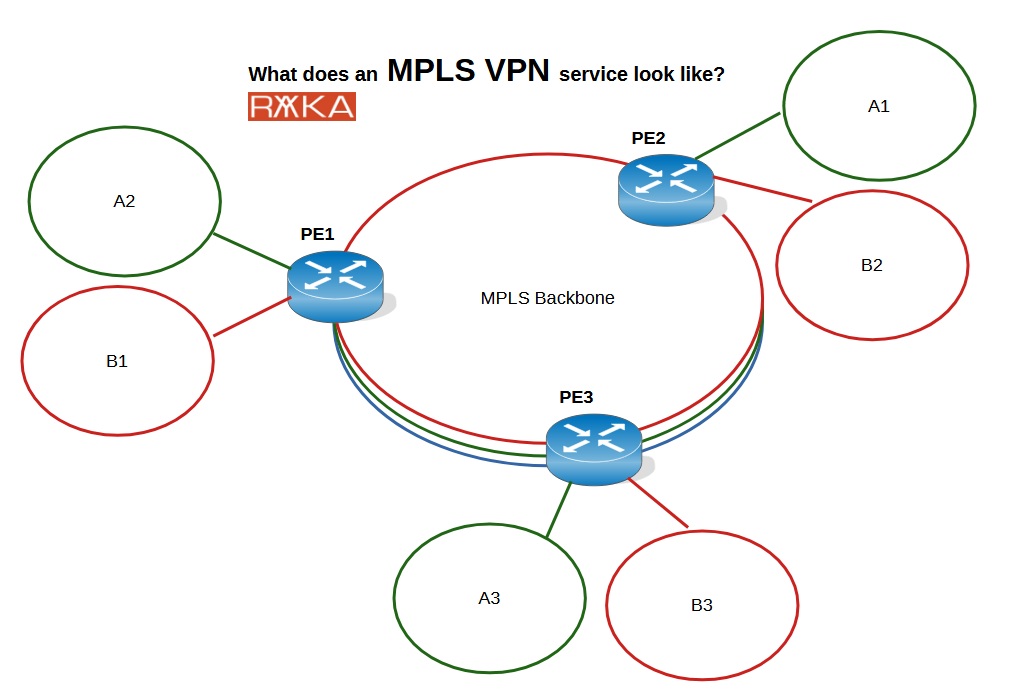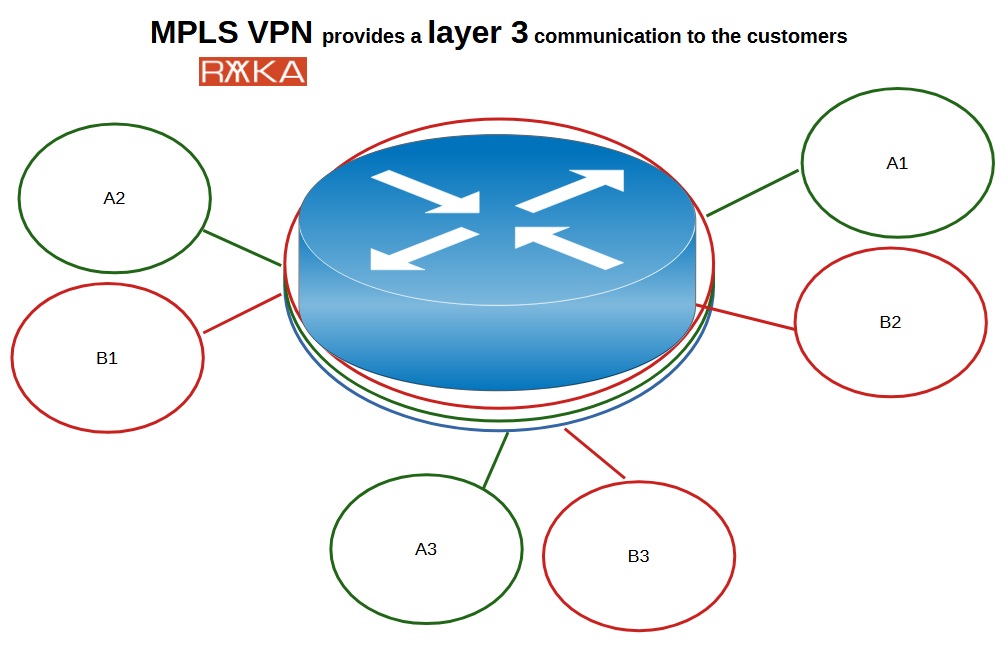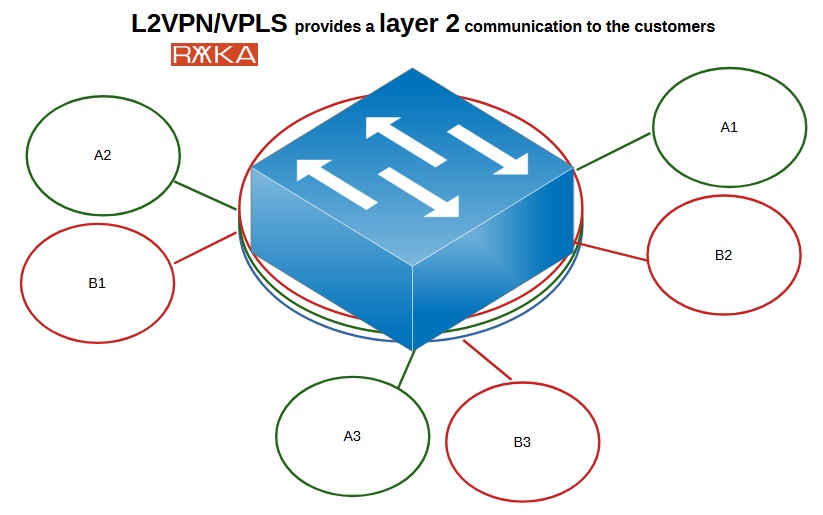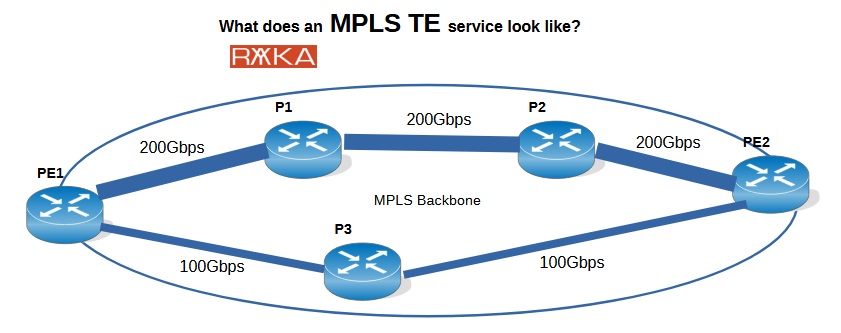What is MPLS, and what unique use cases does it offer beyond traditional IP networks? I will first introduce MPLS services and their applications, including MPLS VPN, L2VPN, and MPLS TE, before exploring the details of how MPLS works in the upcoming sections.
MPLS vs. IP
MPLS is typically used by service provider networks to offer Layer 3 (MPLS VPN) or Layer 2 (L2VPN/VPLS) connectivity services to enterprises. This allows customers to avoid the high costs of leased lines while maintaining secure and efficient network connectivity.
MPLS networks provide three main services that are difficult to achieve in traditional IP networks: MPLS VPN and L2VPN/VPLS, which offer Layer 3 and Layer 2 connectivity to customers, and MPLS TE, which helps service providers optimize bandwidth utilization across their networks.
| MPLS Service | Description |
|---|---|
| MPLS VPN (L3VPN) | Provides Layer 3 (IP routing) connectivity between customer sites over the provider's MPLS backbone. |
| L2VPN/VPLS | Extends Layer 2 connectivity (Ethernet or other) over the MPLS network, allowing multiple sites to appear as if they are on the same LAN. |
| MPLS TE (Traffic Engineering) | Optimizes bandwidth usage by allowing traffic to be routed based on constraints like latency and link utilization. |
Now, let’s take a closer look at these services that are difficult to achieve in a traditional IP network.
MPLS VPN
With MPLS VPN, multiple customers—even those with overlapping IP addresses—can maintain their own private networks and communicate securely over the same service provider’s MPLS infrastructure.
The figure below illustrates how two different customers, each with three sites, connect to each other through the same MPLS network while remaining fully isolated. This ensures that each customer’s communication stays within its own private network. The connection from each site to the MPLS backbone is achieved by connecting to the Service Provider Edge (PE) routers.
In this setup, communication between customer sites occurs at Layer 3, meaning each customer perceives the MPLS backbone as the gateway for their network traffic.
This is achieved using technologies such as VRF, MPLS LSP, and MP-BGP, which will be covered in upcoming lessons.
The question then arises: why can’t this service be easily implemented in a traditional IP network? The main challenge is that, in IP networks, users cannot have overlapping IP addresses. Even if customers don’t have overlapping IP addresses, isolating them from each other is not straightforward.
You might be thinking that customer isolation and overlapping IP addresses could be handled through IP VRF technology in IP traditional network. You’re correct, but in that case, we’d need to configure VRF not only on the edge (PE) routers but also on some internal (P) routers within the service provider network. Additionally, customer routes would need to be advertised inside the service provider’s network, which leads to scalability issues in large-scale environments.
In MPLS VPN services, however, customer routes are not advertised throughout the service provider’s network. Only the PE routers learn the routes related to the customers connected to them, providing a much more scalable solution.
| Aspect | Traditional IP Network | MPLS VPN |
|---|---|---|
| Overlapping IP Address Support | Not possible without complex solutions like NAT or proxy addressing | Possible, as each customer can use the same IP addresses within their own VRF |
| Customer Isolation | Difficult without using complex techniques like VLANs or VRF | Easy, as each customer is isolated within their own VPN and VRF |
| Need for VRF on Internal Routers | Required to handle overlapping IP addresses, as VRF is configured on both PE and P routers | VRF is configured only on the PE routers, not on internal P routers |
| Route Propagation | Customer routes need to be advertised throughout the provider's network | Customer routes are only advertised between PE routers, not throughout the provider's network |
| Scalability | Scalability is limited due to the need to manage all customer routes in the network | Scalable, as PE routers handle customer routes, and internal routers don’t need to carry customer routes |
| Configuration Complexity | High, due to the need to configure VRF, NAT, or other solutions to handle overlapping IP addresses | Lower, as the MPLS VPN encapsulates customer traffic and keeps routes isolated on PE routers |
L2VPN/VPLS
L2VPN or VPLS over an MPLS Backbone enables Layer 2 Ethernet communication between customer sites across the MPLS network.
From a topological perspective, it resembles an MPLS VPN, where customers connect to PE routers. However, the MPLS backbone is configured to facilitate the transfer of MAC addresses between sites.
Essentially, the MPLS backbone acts as an Ethernet switch from the user’s point of view.
In an IP network, providing Layer 2 or Ethernet-like connectivity to customers is not straightforward. This makes it a valuable service offered by MPLS-based service providers.
VPLS services will be covered in a separate course; this course focuses solely on MPLS VPN services.
MPLS TE
Traffic Engineering is another valuable service provided by MPLS-based service providers that is not easily achievable in IP networks.
In an IP network, traffic is always forwarded over the best path, and when that path becomes congested, alternative paths are not utilized to balance the load. Traffic is only distributed across equal-cost paths with the same metric.
With Traffic Engineering, however, traffic can be distributed across multiple paths, even if their bandwidths differ. Ideally, traffic is allocated proportionally to each path’s bandwidth, optimizing network utilization.
In this figure, there are two paths between the PE1 and PE2 routers: one with a bandwidth of 100 Gbps and the other with 200 Gbps. With MPLS TE, we can expect traffic between PE1 and PE2 to be distributed proportionally to the bandwidth of each path.
This service is not provided to customers by the service provider; rather, the service provider uses it internally to optimize bandwidth utilization and reduce costs.
Summary
Service providers prefer MPLS over traditional IP networks due to its unique capabilities:
MPLS VPN allows for secure, isolated Layer 3 network communication for customers, even when they have overlapping IP addresses, which is a significant challenge in IP networks.
VPLS (Virtual Private LAN Service) provides isolated Layer 2 network connectivity, enabling customers to extend their LAN across wide areas as if they were on a single Ethernet switch, something not easily achievable in native IP setups.
MPLS TE (Traffic Engineering) optimizes bandwidth utilization by directing traffic over multiple paths according to network policies, rather than just using the shortest path, thus improving network performance and reducing congestion.



